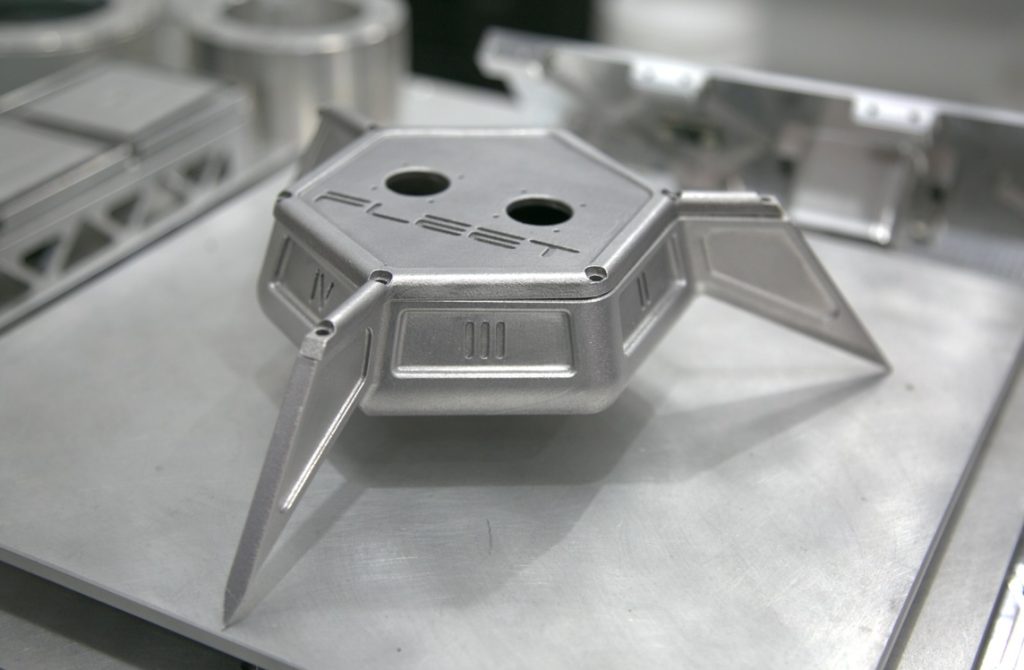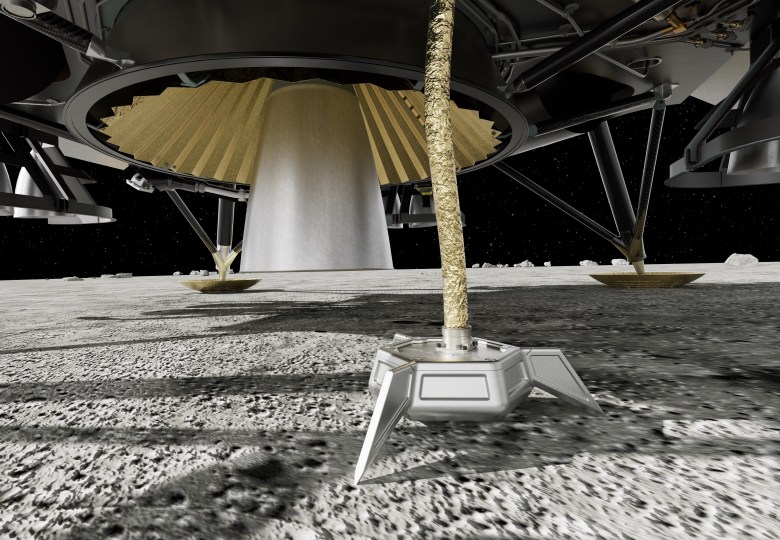
Fleet Space raises $100 million to advance mineral exploration on Earth and beyond (Image Credit: Space News)
ORLANDO, Fla. — Australia’s Fleet Space Technologies has raised $100 million to expand its satellite-based mineral exploration capabilities and take the technology to the moon.
Teachers’ Venture Growth, part of the Ontario Teachers’ Pension Plan, led the nine-year-old company’s Series D funding round.
The latest investment brings Fleet’s total venture funding to more than $165 million and values the company at $525 million, more than double its valuation from a Series C round last year.
Matt Pearson, Fleet cofounder and chief exploration officer, said the proceeds will help the company miniaturize mineral prospecting ground sensors that use its satellites to send seismic data to customers.
Fleet’s ambient noise tomography system, called ExoSphere, is already lighter than alternatives, according to Pearson, and can map 3D subsurface models in days compared to months with conventional techniques.
“But it’s still nine kilos,” he said. “So if you’re hiking through a swamp with one in each hand and two in a backpack — it’s heavy. What we want to do is lighten it up but keep or increase the sensitivity.”
To the moon
Fleet is currently developing a 600-gram version of the sensor to join Firefly Aerospace’s Blue Ghost lunar lander mission to the far side of the moon in 2026.
The Australian company aims to use the device, Seismic Payload for Interplanetary Discovery, Exploration, and Research (SPIDER), to record seismic waves to help characterize the moon’s subsurface.
Earlier this year, the Australian Space Agency awarded Fleet a grant worth 4 million Australian dollars ($2.6 million) to develop a geophysical device that will deliver insights about the subsurface of the lunar South Pole and search for water ice deposits.
“[T]he orthodox view in NASA is, if there’s any water ice in regolith, we don’t care if it’s below a meter down because we’ll never be able to access it,” Pearson said.
“We believe if, if there’s anything worth finding, it’s going to be buried a bit deeper, and there will be techniques to get to it.”

While SPIDER would stay tethered to the lander over the 14-day mission on the far side of the moon in 2026, Pearson said the company ultimately plans to deploy a network of lunar satellites for connectivity.
Fleet sees the mission — scheduled to be Firefly’s second to the moon, with its first gearing up for a January launch — as a precursor to a lunar business. The company is also developing a version of its sensor that could be deployed and repositioned while wearing an astronaut glove.
Pearson said increasing mobility and accelerating data acquisition will be crucial, given the limited time astronauts would spend on the moon in the early days of building out infrastructure there.
Astronauts would begin with wide spacing to map structures, then relocate the array and reduce the aperture size to capture high-resolution snapshots of areas of interest.
“And whereas this used to take years — you’d go back once per season and kind of dial things in — now we can do this in a matter of days,” he said.
Fleet later plans to address similar challenges for expeditions to Mars.
Pearson expects initial customer demand from governments but also sees growing interest from commercial companies looking to develop a lunar economy.
“If you want to know where the sweet spot is to set up base camp, Fleet wants to be the company that can tell you where to do that and work with you to make this the most efficient investment possible,” he said.
Expanding on Earth
On Earth, Fleet says more than 50 exploration companies have used its ExoSphere service on projects across five continents, including Rio Tinto, Barrick, Gold Fields, and Core Lithium.
While compact and lightweight technology is critical for saving costs for moon missions, Pearson expects Earth-based customers will also benefit from the miniaturization efforts.
“We’ve got customers that can only deploy by helicopter in Canada because it’s so densely wooded,” he said. “There’s no way to truck equipment in.”
A smaller device would reduce the burden on people hiking through mountains to use the technology, he added, “and renting a helicopter to fly around the mountains for a couple of months is seriously expensive.”
Fleet currently operates two satellites in low Earth orbit and plans to deploy three more in the first half of 2025 over two separate SpaceX launches.
Existing investors Blackbird Ventures, Hostplus, Horizons Ventures, Artesian Venture Partners, and Alumni Ventures also participated in the Series D funding round.








